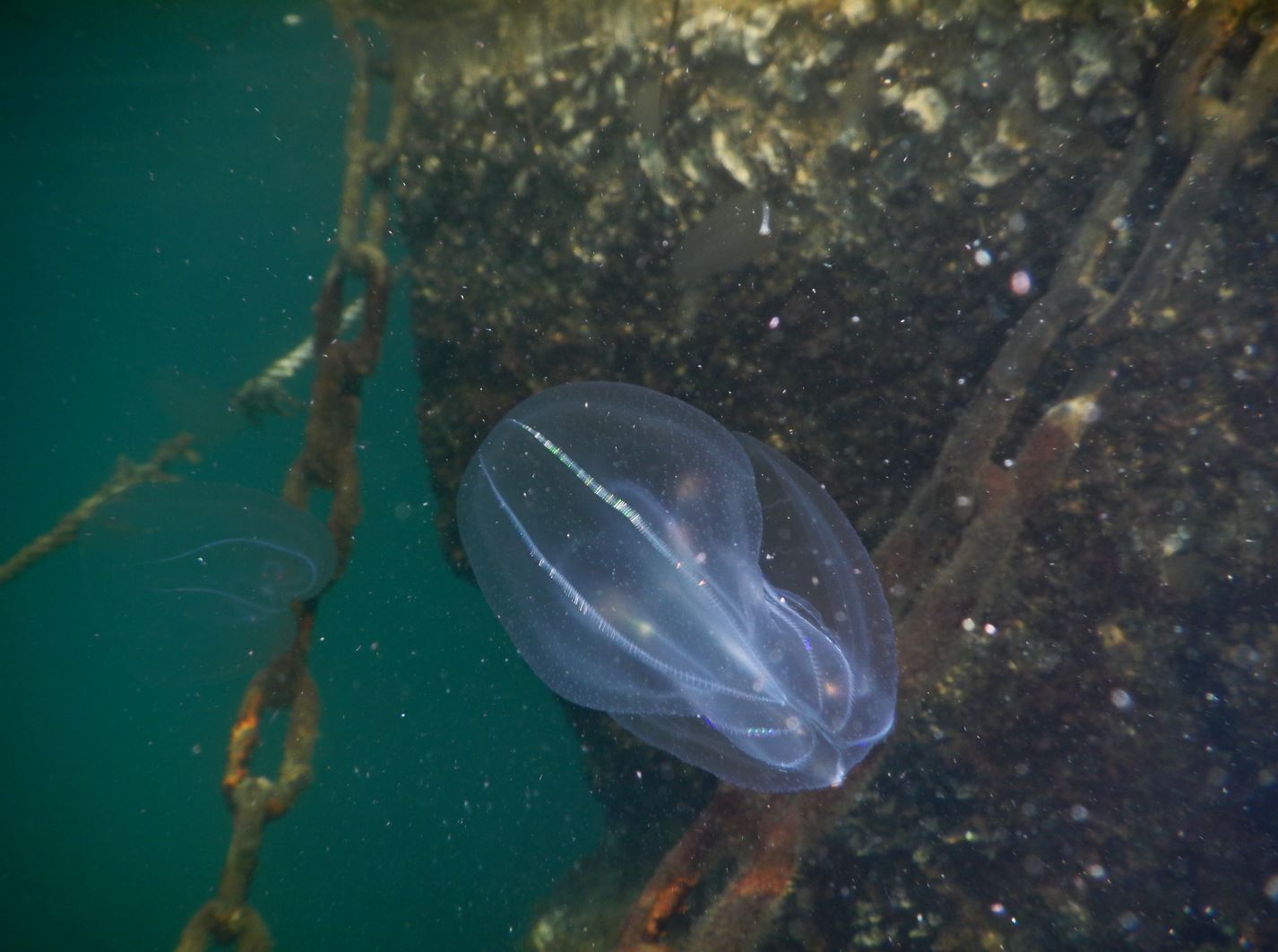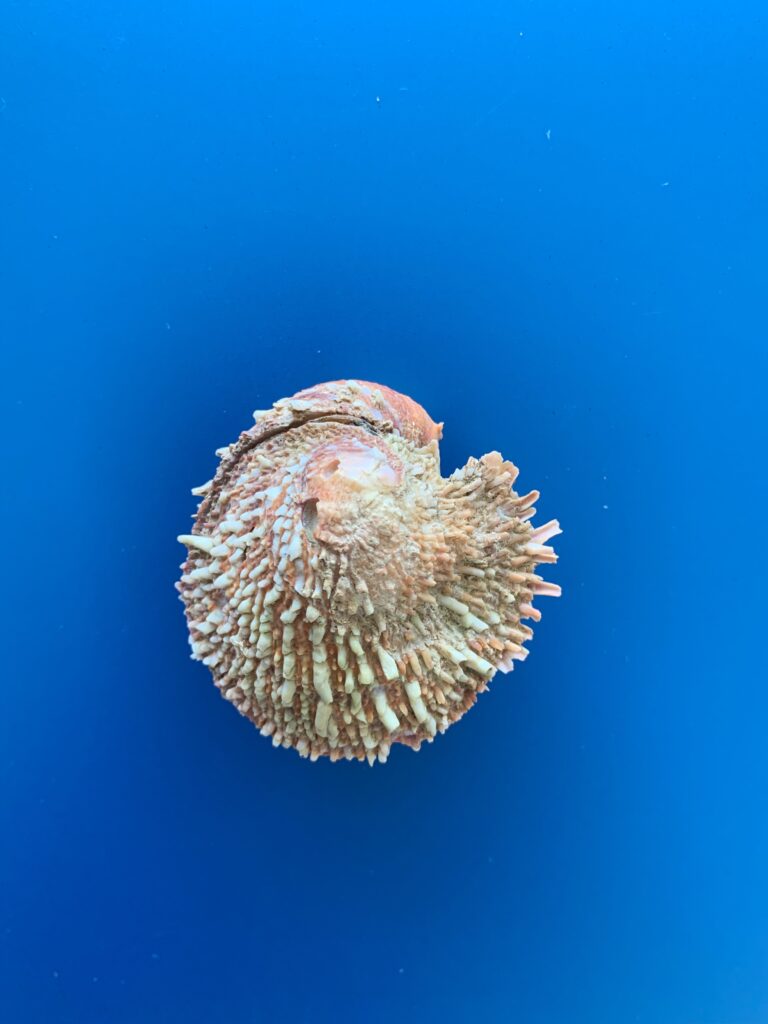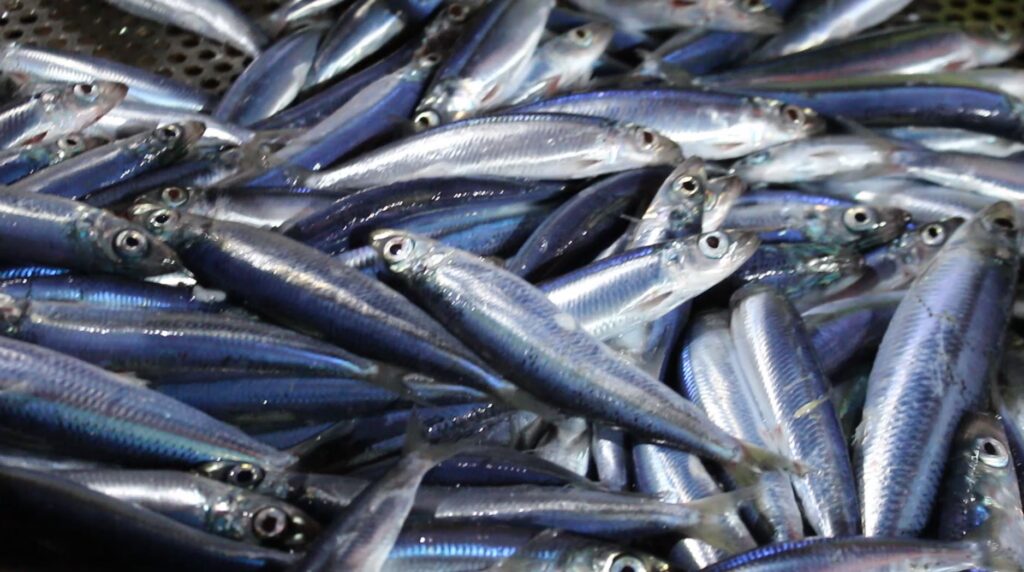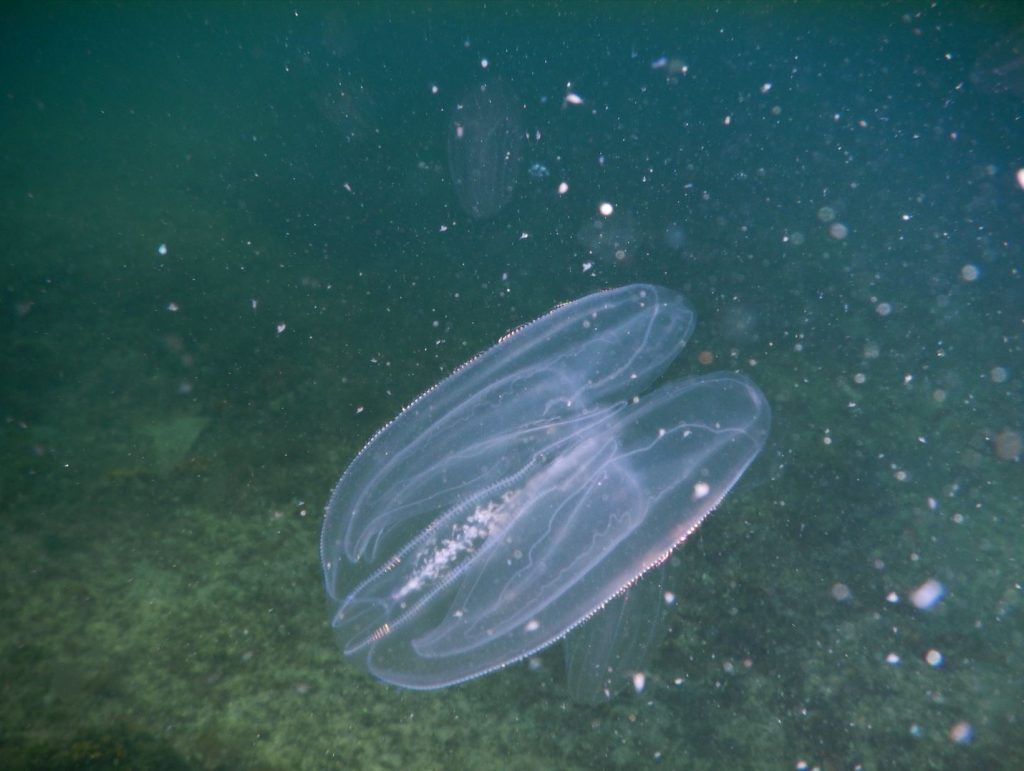Crepidula fornicata
Crepidula fornicata Read More »
Make a call: +30 211 10 65 217
Email:elnais(at)hcmr.gr
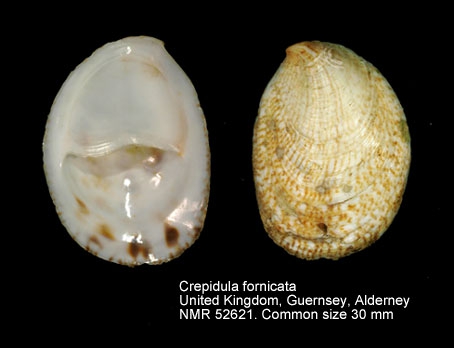
The species has a brown shell that reaches about 6 cm long. The septum divides the interior of the shell into two parts: the external one where the foot and head can move and the internal one where the visceral mass is protected. The plasticity of this species is important and shell can be deformed
Delamotte, M., Vardala-Theodorou, E. (1994). Shells from the Greek Seas. The Goulandris Natural History Museum, Athens, 299 pp
1985
TC, TS
Slipper limpet
Being eurythermic and euryhaline, this species can be observed in all kinds of environments: rocky, gravel or sandy bottoms, as well as in muddy areas. (depth: 0-15m) This suspension-feeding species eats phytoplanckton during both the pelagic larval phase and as an adult.
Sites where Crepidula fornicata has been recorded in the Hellenic Seas.

Crepidula fornicata Read More »
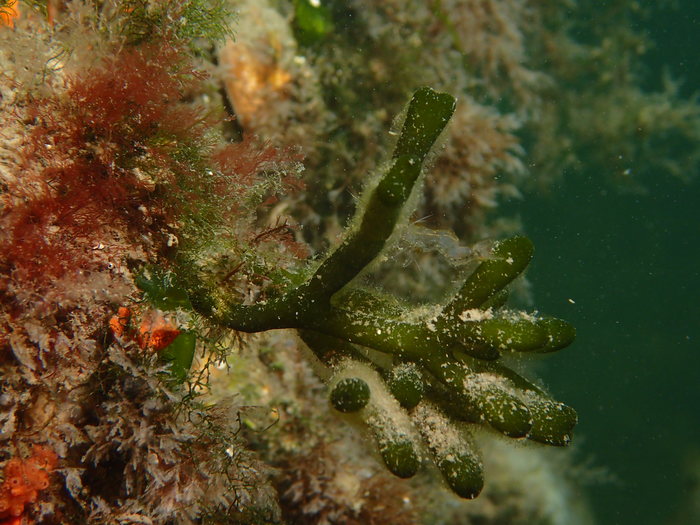
The species originates from the Pacific Ocean (Japan) and has been spread to both hemispheres, mainly due to shipping (Carlton and Scanlon 1985). In Europe, it was first found on the Dutch coasts of the North Sea in 1900 (Silva 1955), and since then, it was introduced in the western Mediterranean through Gibraltar in 1940 (Meslin 1964). Today, it has been spread also in the eastern basin of the Mediterranean Sea, including the Turkish coasts (Gurner et al., 1985)
Tsiamis, K., Panayotidis, P. (2007). Occurrence of Codium fragile subsp. tomentosoides (van Goor) P.C. Silva (Chlorophyta: Bryopsidophyceae: Bryopsidales: Codiaceae) in Greece. Aquatic Invasions 2(1): 74-76
1992
TS-Angl/fish
Sponge seaweed
The species is a model study system for many fields from algal physiology, endosymbiosis, and heavy metal accumulation to invasion ecology, algal genetics, and natural products. The alga also has economic value: it is cultivated for human consumption in Asia, used as invertebrate food by the mariculture industry, is a pest of natural and cultivated shellfish beds, is a source of bioactive compounds (antibiotic, anticarcinogenic, immuno-suppressive, anti-insect, and antihelminthic activity), and accumulates heavy metals, thus providing a model indicator of pollution.
Sites where Codium fragile subsp. fragile has been recorded in the Hellenic Seas.
Codium fragile subsp. fragile Read More »
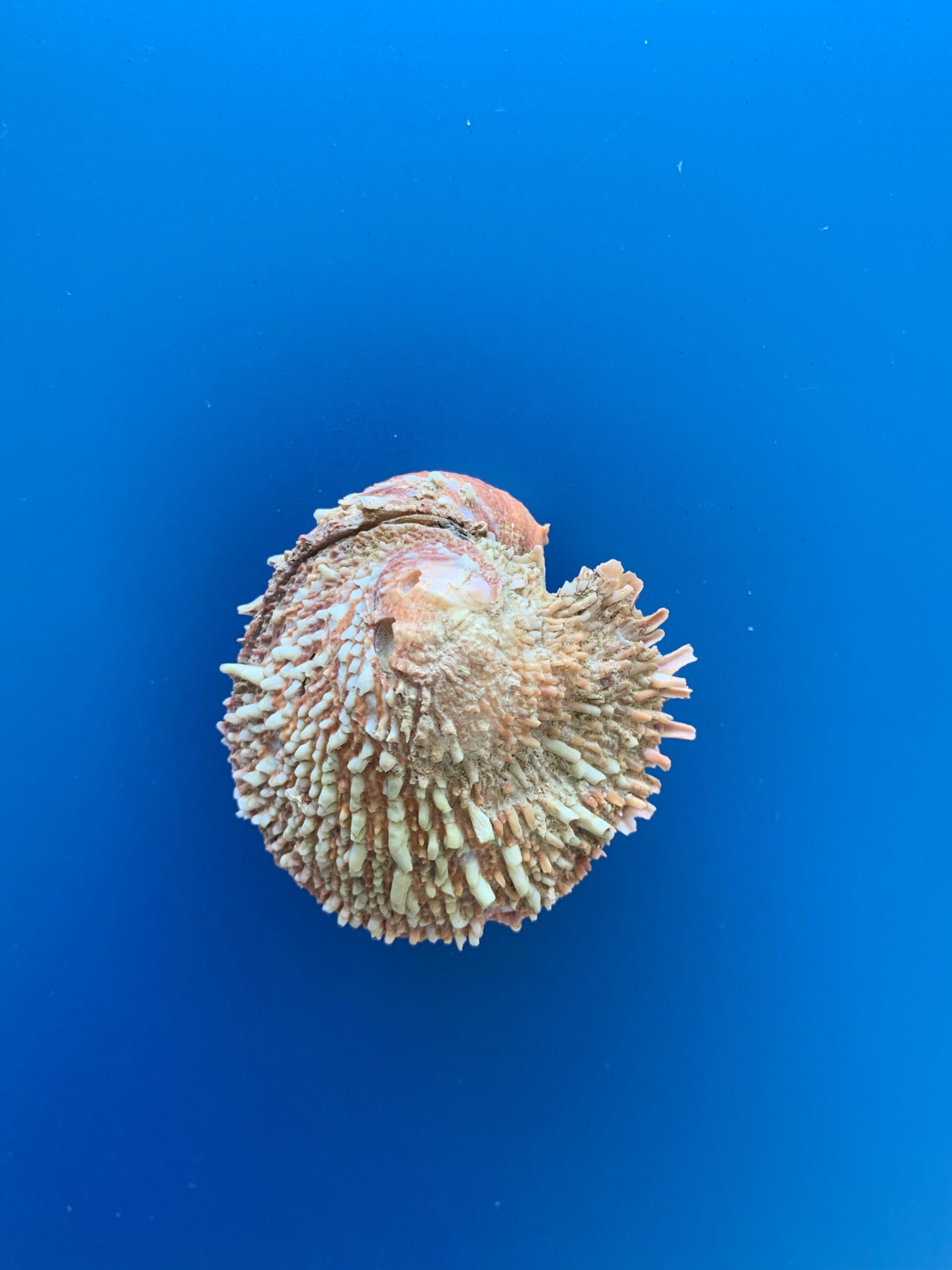
Shell large, solid strongly inequivalve with lower valve bigger and deeper than the upper. Outline irregular, generally suboval to subcircular. Exterior white, red, orange or purple; interior white usually splashed with pale or deep rose, particularly round the margins. Sculpture of short spines more pronounced towards the margin where they are concentrically lamellate. More prominent spines on the left side of the valve. Internal margin encircled by a finely-crenulate-striate ridge. It grows its shell up to 70mm in height.
Karachle PK, Angelidis A, Apostolopoulos G, Ayas D, Ballesteros M, Bonnici C, Brodersen MM, Castriota L, Chalari N, Cottalorda JM, Crocetta F, Deidun A, Đođo AZ, Dogrammatzi A, Dulčić J, Fiorentino F, Gönülal O, Harmelin JG, Insacco G, Izquierdo-Gómez D, Izquierdo-Muñoz A, Joksimović A, Kavadas S, Malaquias MAE, Madrenas E, Massi D, Micarelli P, Minchin D, Önal U, Ovalis P, Poursanidis D, Siapatis A, Sperone E, Spinelli A, Stamouli C, Tiralongo F, Tunçer S, Yaglioglu D, Zava B, Zenetos A (2016) New Mediterranean Biodiversity Records (March 2016). Mediterranean Marine Science 17: 230-252
2005
UNA
Reflexed jewel box
Chamids are stenohaline nearshore inhabitants of rocky shores and coral reefs with a poor ability to withstand low salinity as that of estuarine regions. The eggs are small, fertilization occurs externally, and the larvae probably undergo a prolonged planktonic development.
No impacts on biodiversity have been reported.
No impacts on health and ecosystem services have been recorded.
Yes
No
Sites where Chama pacifica has been recorded in the Hellenic Seas.
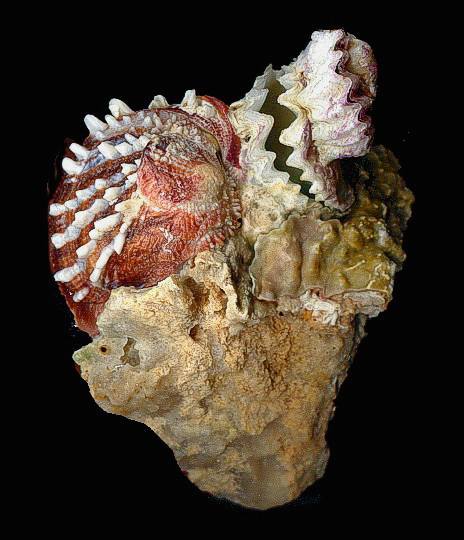

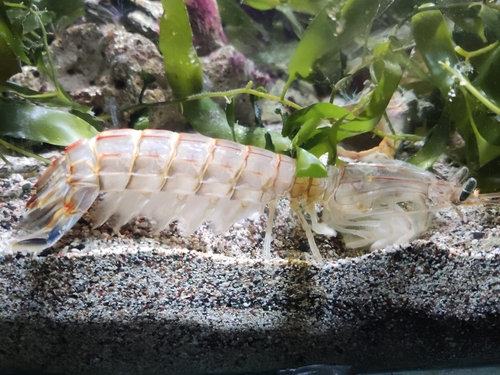
As their common name suggests, it resembles a cross between a preying mantis and a shrimp. The species is easily distinguished from Squilla mantis due to the lack of the paired dark spots on the dorsal part of the telson. Colour light grey-orange dotted with very small dark spots.
Corsini, M., Margies, P., Kondylatos, G., Economidis, P.S., (2006). Three new exotic fish records from the SE Aegean Greek waters. Scientia Marina 70: 319-323.
1963
UNA
Red Sea mantis shrimp
It prefers muddy, sandy, argillaceous funds and of gravel. It can be found up to 200m in depth, but most commonly between 20-40m. Reaches up to 20 cm.
No impact on biodiversity has been reported to date.
Despite the fact that in its native distribution it is a commercial species, it is still of minor importance in the Mediterranean, but with a potential importance for fishing.
Yes
No
Sites where Erugosquilla massavensis has been recorded in the Hellenic Sea.


Erugosquilla massavensis Read More »
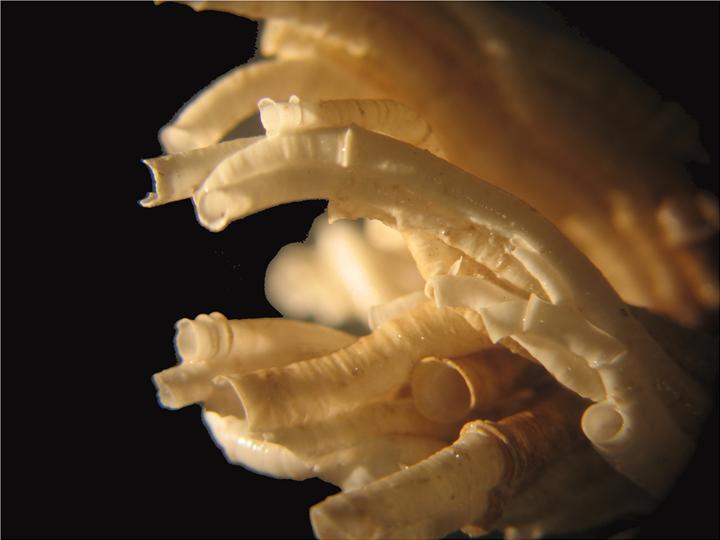
The species resembles a tube-shaped organism. It represents a tube building polychaete worm that presumably origin from the Southern Hemisphere. The species habitat is characterized as the hard needed for the species attachment. Increased abundance of the species can lead to reef like structures up to 4 meters in width and more than 2 meters in height.
Marinov, T. (1959). Beitrag zur Erforschung der Polychaeten vom Agaischen Meer. Izvestiya akademii nauk Sofia 8: 293-295
1959
TS-hulls
Australian tubeworm
Sites where Ficopomatus engimaticus has been recorded in the Hellenic Sea.
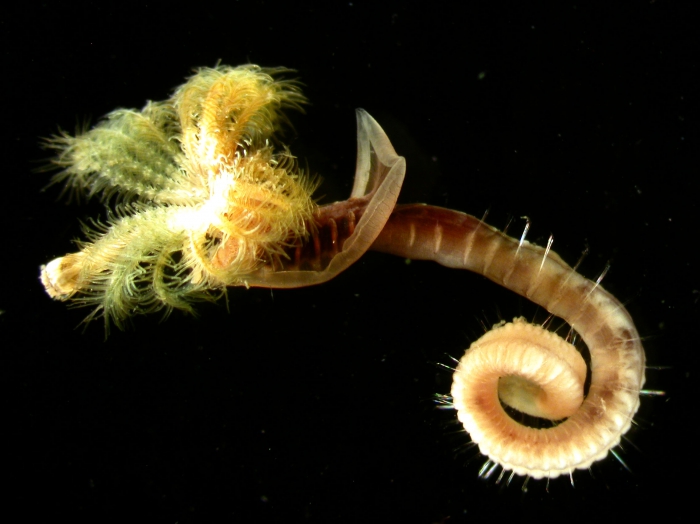

Ficopomatus enigmaticus Read More »
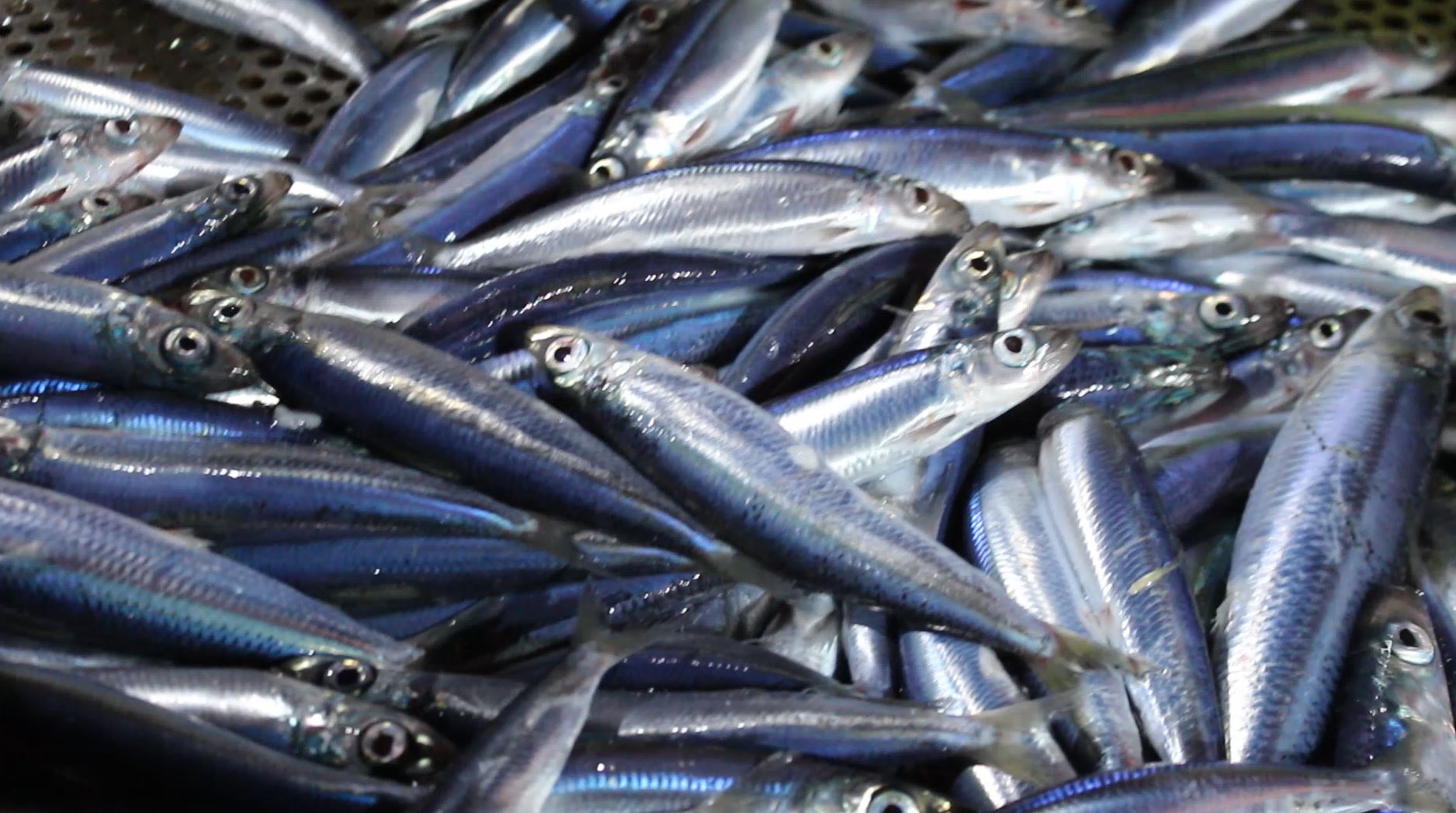
© Vagenas, G. (4ALIEN, HCMR)
Body streamline. Its characteristics resemble and seem likes a mixture of those of a sardine, round sardinella and anchovy. Colour iridescent blue-green dorsally on body, dark pigmentation, shading through bronze to silvery white on belly.
Kallianiotis A., & Lekkas V. (2005). First documented report on the Lessepsian migrant Etrumeus teres De Kay, 1842 (Pisces: Clupeidae) in the Greek Seas. Journal of Biological Research 4: 225-229.
2003
UNA
Golani’s round sardinella
Small pelagic fish that forms large schools. It mainly preys on zooplanktonic crustaceans.
In general, it is not considered of threat to biodiversity. Yet, given the fact that interactions with other small/medium pelagic species are not very well known, there is a chance it will lead to biomass changes and/or distribution of native species (e.g. sardine, anchovy, round sardinella).
Interactions with other small/medium pelagic species are not weel known. Such interactions, apart from impacts on biodiversity, would impact fisheries. Yet, this species is a commercial one and with good potential in processing.
Yes
No

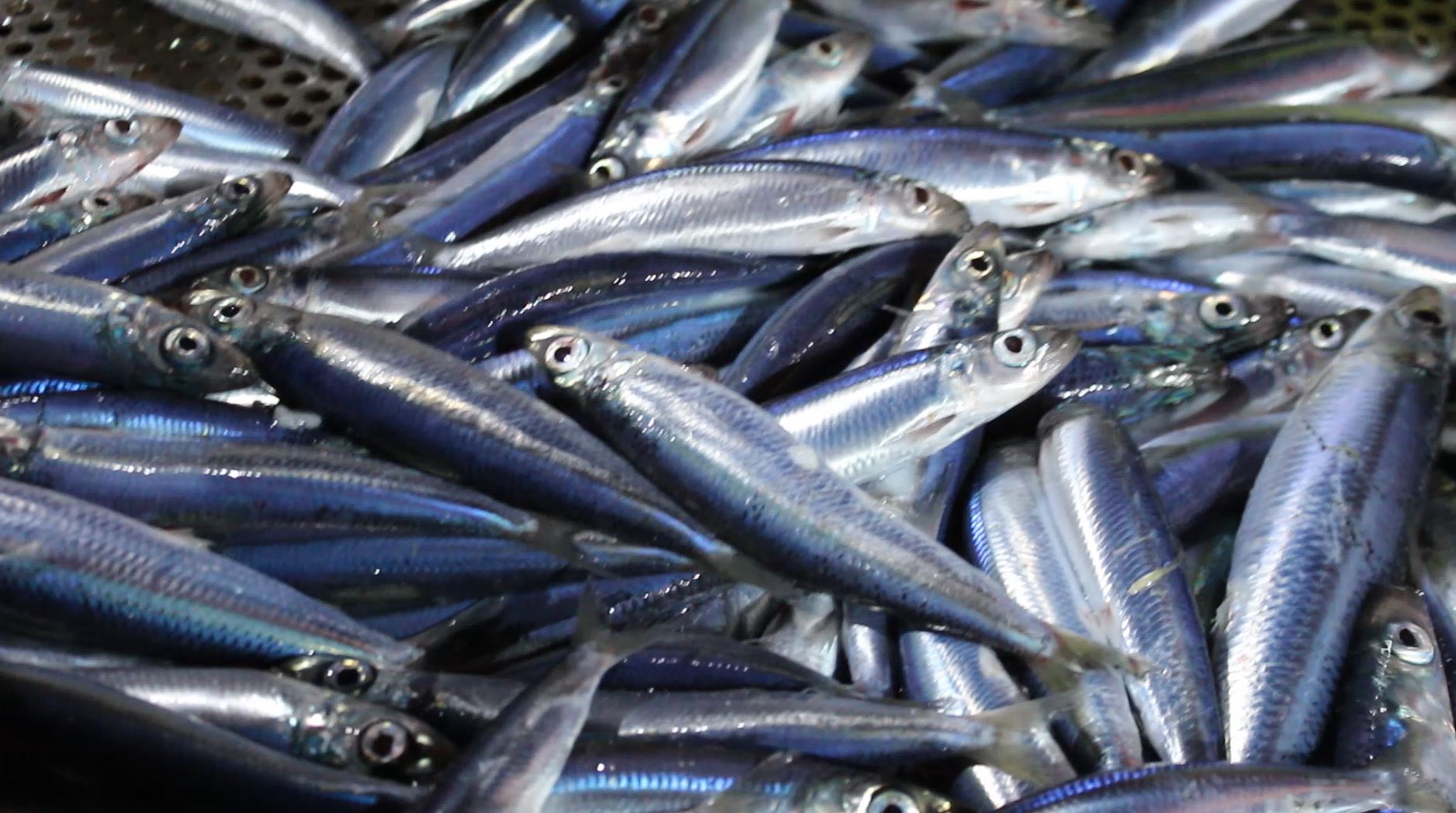
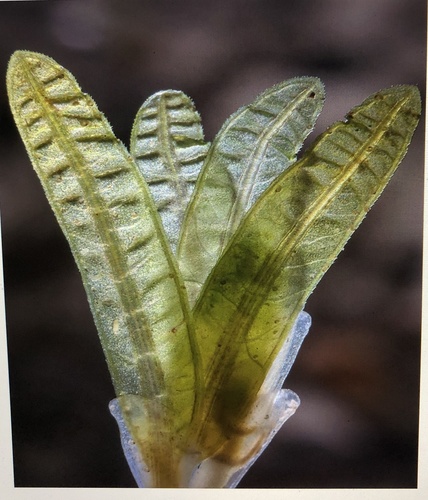
A tropical subtidal seagrass that is widely distributed along the coasts of the western Indian Ocean and Red Sea, and forms mono- or poly-specific meadows along the shore line. This species invaded the Mediterranean probably from the Red Sea through the Suez Canal, and it has been known to occur in the Mediterranean basin since 1895.
Fritsch, C. (1895). Uber die Auffindung einer marinen Hydrocharidae im Mittelmeer. Verhandlungen der zoologisch botanischen gesamten Wien 45: 104-106
1894
UNA
Broadleaf seagrass
A tropical subtidal seagrass that is widely distributed along the coasts of the western Indian Ocean and Red Sea, and forms mono- or poly-specific meadows along the shore line. This species invaded the Mediterranean probably from the Red Sea through the Suez Canal, and it has been known to occur in the Mediterranean basin since 1895.
Sites where Halophila stipulacea has been recorded in the Hellenic Sea.
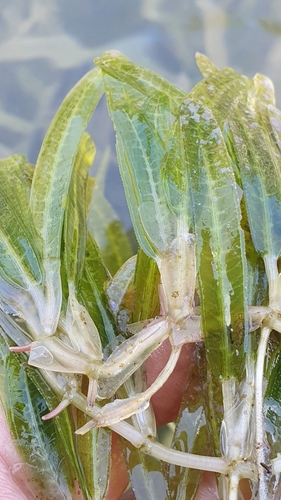

Halophila stipulacea Read More »
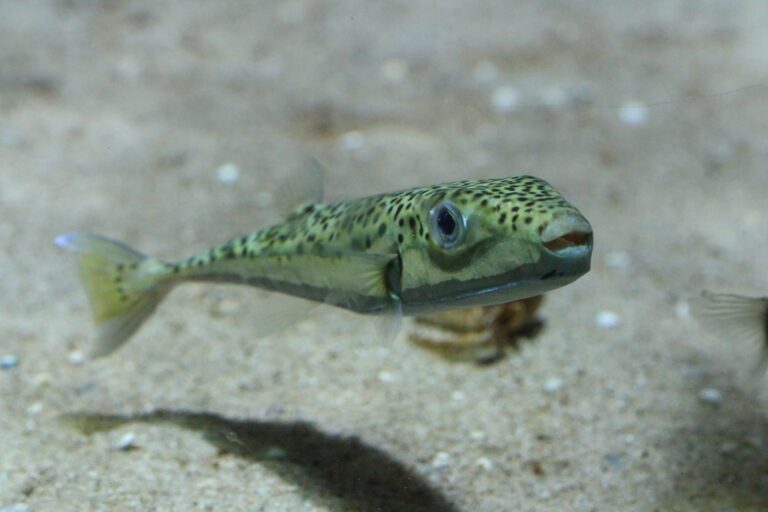
© EXPLIAS (HCMR)
Bat-shaped body. Reaches sizes of ≈100 cm, but the common length is ≈50 cm. Mouth with fused jaw teeth which are very sharp. A characteristic silver band runs along the sides. Back silvery-grey with black dots of nearly equal size, belly white.
Corsini, M., Margies, P., Kondylatos, G., Economidis, P.S., (2006). Three new exotic fish records from the SE Aegean Greek waters. Scientia Marina 70: 319-323.
2005
UNA
Silver-cheeked toadfish
Inhabits offshore reefs, sandy bottoms and Posidonia oceanica meadows. Feeds on cephalopods, crustaceans and fish.
A voracious predator that prefers cephalopods (squids, cuttlefish and octopus). Fishers report significant reductions of commercial cephalopods in areas where silver-cheeked toadfish thrives.
Highly toxic and fatal to eat! Contains tetrodotoxin which is a source for food poisoning! The EU has forbidden its commercially exploitation. Predation on native species and gear damaging affects fisheries. Attacks to humans have been reported.
No (toxic, leathal to eat)
Yes (toxic, leathal to eat)
Sites where Lagocephalus sceleratus has been recorded in the Hellenic Sea.

Lagocephalus sceleratus Read More »
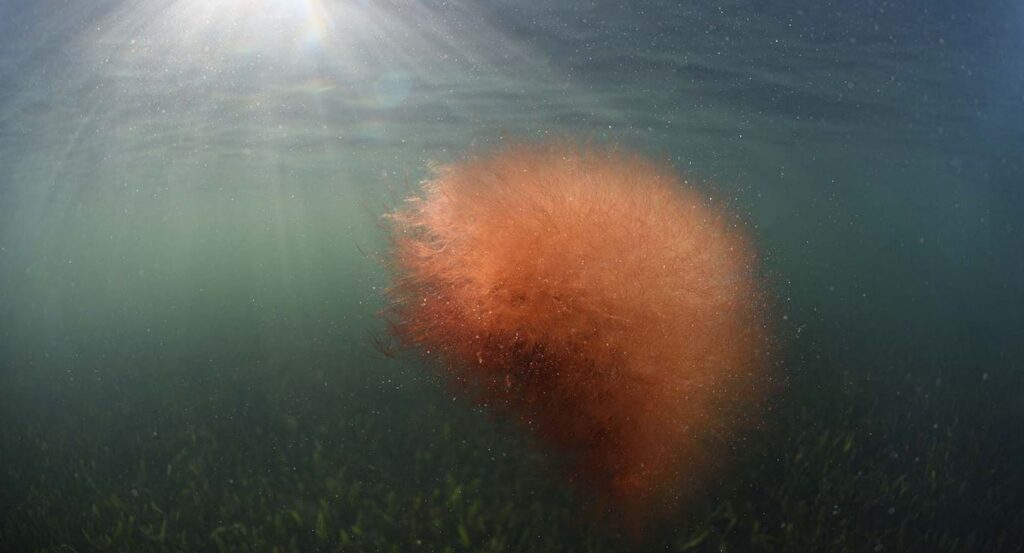
The species is described as a filamentous red algae which can reach up to 15 cm tall. In the marine environment the species usually appears as a bush of red, pink or whitish filaments intertwined with each other or with other algae.
Petersen, H.E. (1918). Algae (excl. calcareous algae). In: Schmidt J (ed.) Report on the Danish Oceanographical Expeditions 1908-1910 to the Mediterranean and adjacent seas. Vol. II. Biology. Vol. [Art.] K.3, Københaven, pp. 1-20
1908
TS-Angl/fis
Sites where Lophocladia lallemandii has been recorded in the Hellenic Seas.

Lophocladia lallemandii Read More »
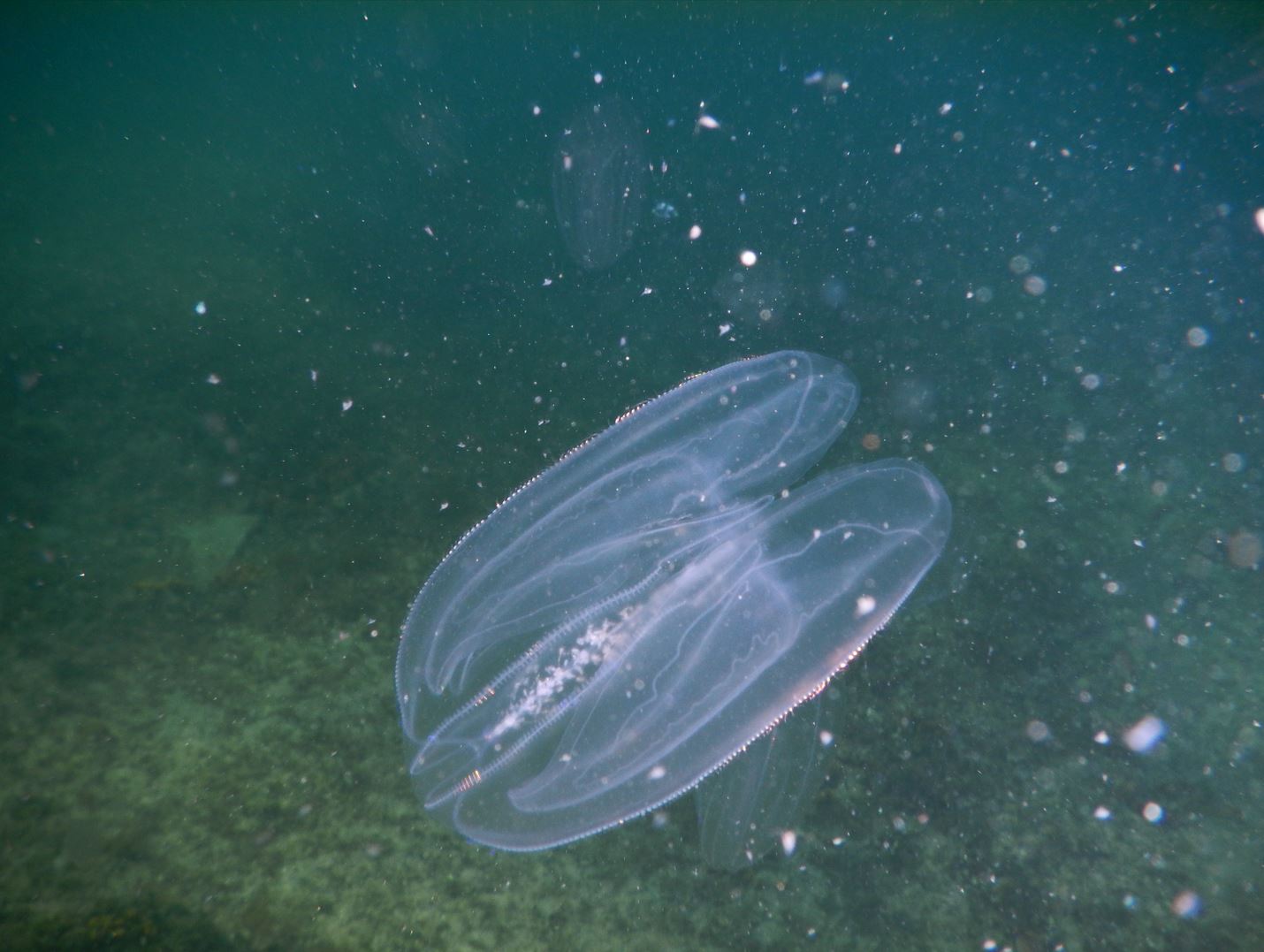
Mnemiopsis have an oval-shaped and transparent lobed body, with four rows of ciliated combs that run along the body vertically and glow blue-green when disturbed. They have several feeding tentacles. Their body comprises 97% water. They have a maximum body length of roughly 7–12 cm and a diameter of 2.5 cm
Shiganova T, Mirzoyan Z, Studenkina E, Volovik S, Siokou-Frangou I, Zervoudaki S, Christou ED, Skirta A, Dumont H (2001) Population development of the invader ctenophore Mnemiopsis leidyi in the Black sea and in other seas of the Mediterranean basin. Marine Biology 139: 431-445
1990
UNA
Sea walnut
It is euryoecious, tolerating a wide range of salinity (2-38 psu), temperature (2–32 °C), and water quality. It is a carnivore that consumes zooplankton including crustaceans, other comb jellies, eggs, larvae of fish. It has the capacity for self-fertilization, as it is hermaphroditic.
No impacts on biodiversity have been reported
Unlike cnidarians, Mnemiopsis does not sting. No impacts on health and ecosystem services has been reported.
No
No
Sites where Mnemiopsis leidyi has been recorded in the Hellenic Sea.
